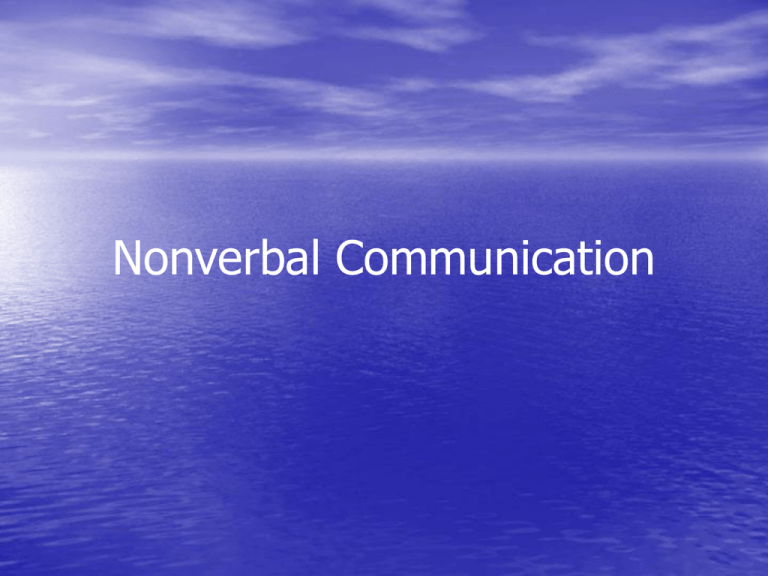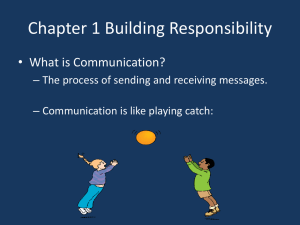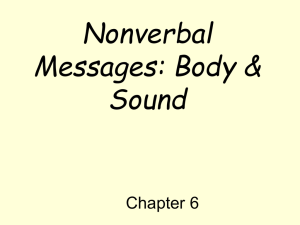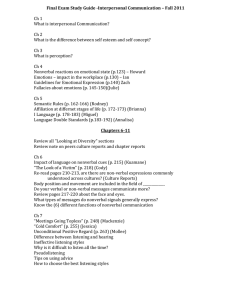Nonverbal Communicaton
advertisement

Nonverbal Communication “ The superior man is modest in his speech, but exceeds in his actions.” Confucius Research • Albert Mehrabian – 7% words – 38% tone and inflection – 55% facial expression, body position and gestures Nonverbal Communication • • • • • • • • Unwritten and unspoken messages Eye contact Facial expression Body movements Space Time Distance Appearance Functions • Complement the message • Reinforce and call attention to • Replacement • Controls and regulates • Contradicts Forms of Nonverbal Communication • Appearance – Dress code – Watches Forms of Nonverbal Communication • Facial expressions – – – – – – – – Anger Sadness Fear Enjoyment Love Surprise Disgust Shame Forms of Nonverbal Communication • Eye contact – Maintaining – Deceiving – Prolonged – Cultural implications Forms of Nonverbal Communication • Posture – Confidence – Shyness – Tension or relaxation – Showing attentiveness to speaker Forms of Nonverbal Communication • Gestures – Learned behaviors – Mirroring others – Cultural differences Forms of Nonverbal Communication • Time – Scheduling of time – Meetings – Punctuality – Time allotted for projects Forms of Nonverbal Communication • Space – Location of office – Size of furniture – Arrangement of furniture • Barrier • Inviting – Display of personal items – Where you sit Forms of Nonverbal Communication • Distance (Proxemics) – Intimate zone: • 1 to 1 ½ feet – Personal Zone: • 1 ½ to 4 feet – Social Zone: • 4 to 12 feet – Public Zone: • 12 or more feet Edward T. Hall, Anthropologist Forms of Nonverbal Communication • Territory – View certain areas as our own – Be aware of zones of privacy Forms of Nonverbal Communication • Appearance of Business Documents – Looks can give a positive or negative effect – Emails – Format, organization, readability and accuracy Seating Dynamics • Cooperation • Communication • Competition • Noncommunication Presentations • Appearance • Body language • Move around • Facial expressions References • Mary Ellen Guffey Business Communication, (Thomson Publishing Ohio) p. 79-81, 83-86, and 497. • Richard Daft, The Leadership Experience, (Thomson Publishing Ohio) p.144-345. • Debra L. Nelson and James Campbell Quick Organizational Behavior, (Thomson Ohio) p. 256257/







